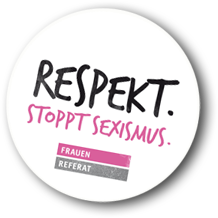„Hetero“ is an abbreviation of „heterosexual“ and means that love and sexual desires are only directed toward people of the opposite gender. So that women (or girls) only fall in love with men (or boys) and vice versa. The first part of the word comes from the Greek word “heteros” (“unequal”), and the second part from the Latin word “sexus” (“gender”). So heterosexuality is sexuality between two people of different sexes.
When two women (or two men) are in love with each other, their love is not hetero- but homosexual. “Homo” comes from the Greek word “homos” (“equal”). Homosexual is the generic term for “lesbian” (for girls and women) and “gay” (for boys or men).
But not all people who have heterosexual experiences are automatically heterosexual. Just as those who have had homosexual experiences are not automatically homosexual. Heterosexual or homosexual behavior and “sexual identity” are not necessarily identical. People who live predominantly heterosexual lives can also have homosexual experiences, and vice versa. In everyday language, however, behavior and identity are often mixed up. When someone falls in love with a person of the same sex, they are often automatically assigned a homosexual identity: They are stamped “lesbian” or “gay”.
People who are not heterosexual themselves, also refer to people with heterosexual orientation as “heteros” (men) and “heteras” (women). Or both together as “heten”. In the non-heterosexual scene, the word “straight” is also used to describe people with heterosexual orientation. The counterpart to “straight” is “queer” (meaning “deviating from the norm”). These terms clearly show that hetero and homo are not just different alternatives between which everyone can choose freely. The social expectation is clearly a heterosexual orientation. It is considered the “right” sexual orientation. Everything else is considered “different”. You can find more information about this under the keyword “homophobia”.
“Queer” no longer stands only for homosexual, but for all sexual orientations that do not correspond to the supposedly “normal” heterosexuality. In addition to gays and lesbians, this also for example includes bisexual, intersex or transgender. You can find more information about these terms here under the respective keywords. In addition to “queer”, the abbreviation “LGBTIQA+” is also used, which stands for lesbian, gay, bisexual and transgender.
